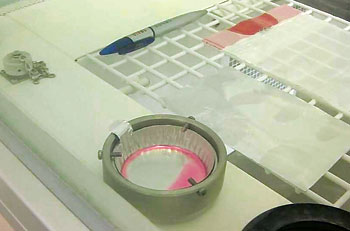INDIAN ARMED FORCES CHIEFS ON OUR RELENTLESS AND FOCUSED PUBLISHING EFFORTS

The insightful articles, inspiring narrations and analytical perspectives presented by the Editorial Team, establish an alluring connect with the reader. My compliments and best wishes to SP Guide Publications.

"Over the past 60 years, the growth of SP Guide Publications has mirrored the rising stature of Indian Navy. Its well-researched and informative magazines on Defence and Aerospace sector have served to shape an educated opinion of our military personnel, policy makers and the public alike. I wish SP's Publication team continued success, fair winds and following seas in all future endeavour!"

Since, its inception in 1964, SP Guide Publications has consistently demonstrated commitment to high-quality journalism in the aerospace and defence sectors, earning a well-deserved reputation as Asia's largest media house in this domain. I wish SP Guide Publications continued success in its pursuit of excellence.
- Indian Air Force Aims for Full Indigenous Inventory by 2047 — Air Chief Marshal A.P. Singh
- General Upendra Dwivedi takes over as the Chief of the Army Staff
- Rajnath Singh assumes charge as Defence Minister for the second consecutive term
- Admiral Dinesh K. Tripathi assumes Command of the Indian Navy as 26th Chief of the Naval Staff
- Prime Minister witnesses 'Bharat Shakti' – a Tri-Services Firing and Manoeuvre Exercise in Pokhran, Rajasthan
New technique to detect fingerprints

Researchers have developed an innovative product that uses fluorescence to detect fingerprints. This new product, Lumicyano, will make it possible to highlight fingerprints directly, more rapidly, and at a lower cost, avoiding the cumbersome processes required until now.
An innovative product that uses fluorescence to detect fingerprints has been developed by a team from the Laboratoire de Photophysique et Photochimie Supramoléculaire et Macromoléculaire (CNRS/ENS Cachan) in collaboration with the specialised French firm Crime Scene Technology.
This new product, Lumicyano, will make it possible to highlight fingerprints directly, more rapidly, and at a lower cost, avoiding the cumbersome processes required until now. The product has been successfully put through its paces by the French Police and Gendarmerie as well as by Scotland Yard and the FBI. It has led to a publication in Forensic Science International and a patent has been filed.
ACNRS release reports that scientific police can find it difficult, however, to make use of such fingerprints when they are too light or their contrast is too low. When someone places their finger on an object, they leave behind a trace composed of water, salts, fats, amino acids and, potentially, DNA. To reveal this latent trace, the most widely employed technique is fuming of a cyanoacrylate compound, better known as “Super Glue.” This reacts with the elements present in the fingerprint and polymerises, leaving a white deposit that technicians can then photograph and analyse. This technique, however, can at times entail certain difficulties. For example, when the fingerprint support is of light colour, the contrast with the fingerprint is too low to be photographed. Similarly, if the fingerprint is very light, the deposit will be too tenuous to obtain an exploitable image.
The release notes that Lumicyano offers excellent detection performance. In addition, it reduces costs and treatment times. Another advantage is that it does not destroy the DNA that can sometimes be extracted from fingerprints. Its operational efficiency has been successfully tested and validated, not just by the French Police and Gendarmerie but also by several other police forces throughout the world such as Scotland Yard and the FBI.





